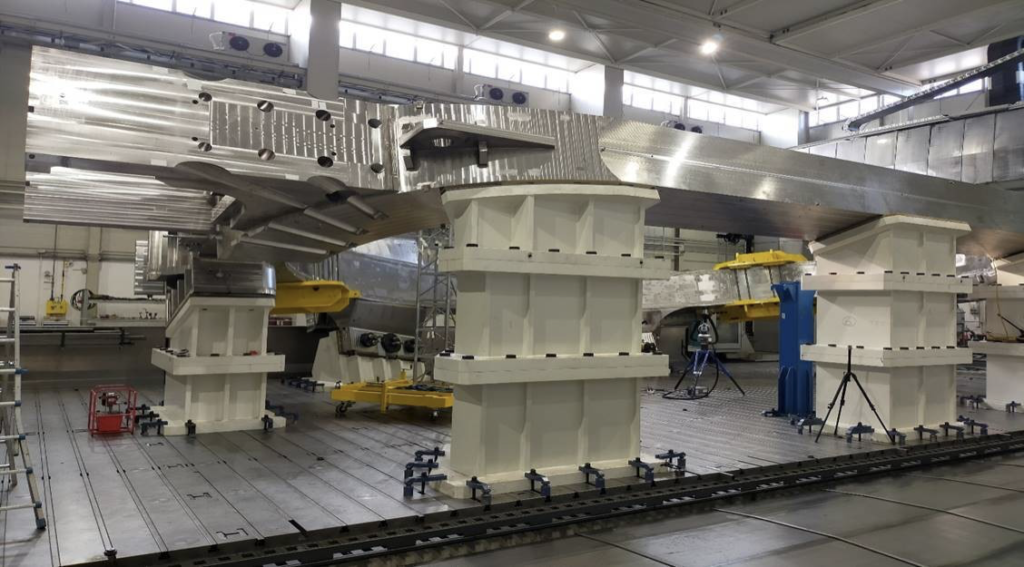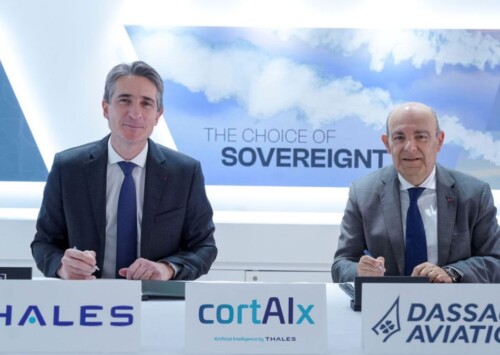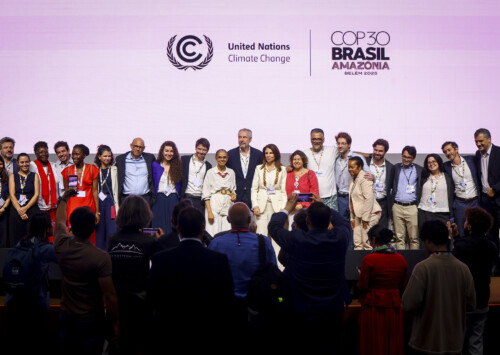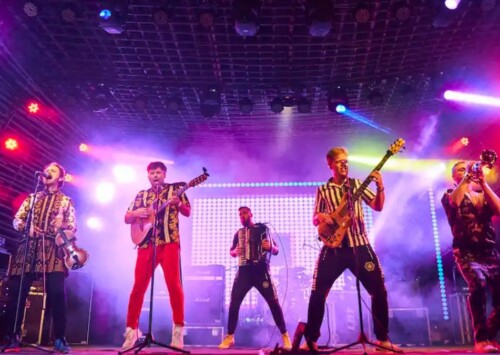ITER fusion reactor receives mega toroidal field coils
Key component jointly manufactured in Japan & Europe
A significant step in the progress of setting up of multinational ITER fusion energy project has been reached with the delivery of toroidal field coils that have been manufactured in Japan and Europe and are a key component.
After two decades of design, production, fabrication and assembly on three continents, the historic, multinational ITER fusion energy project today celebrates the completion and delivery of its massive toroidal field coils from Japan and Europe.
According to a press statement issued by ITER, which is a multinational project involving research, development and construction of the world’s first fusion energy generation project, Japanese Minister of Education, Culture, Sports, Science and Technology Masahito Moriyama and Italian Minister of Environment and Energy Security Gilberto Pichetto Fratin will attend the ceremony with officials from other ITER members.
The statement adds that 19 gigantic toroidal field coils have been delivered to southern France. They will be key components in ITER, the experimental fusion mega-project that will use magnetic confinement to imitate the process that powers the sun and stars and gives Earth light and warmth.
Fusion research is aimed at developing a safe, abundant, and environmentally-responsible energy source.

ITER is a collaboration of more than 30 partner countries
ITER is a collaboration of more than 30 partner countries: the European Union, China, India, Japan, Korea, Russia and the United States. Most of ITER’s funding is in the form of contributed components. This arrangement drives companies like Mitsubishi Heavy Industries, ASG Superconductors, Toshiba Energy Systems, SIMIC, CNIM, and many more to expand their expertise in the cutting-edge technologies needed for fusion.
The statement adds that the D-shaped toroidal field coils will be placed around the ITER vacuum vessel, a donut-shaped chamber called a tokamak. Inside the vessel, light atomic nuclei will be fused together to form heavier ones, releasing enormous energy from the fusion reaction.
The fuel for this fusion reaction is two forms of hydrogen, deuterium and tritium (DT). This fuel will be injected as a gas into the tokamak. By running an electrical current through the gas, it becomes an ionised plasma, the fourth state of matter, a cloud of nuclei and electrons.
The plasma will be heated to 150 million degrees Celsius, 10 times hotter than the core of the sun. At this temperature, the velocity of the light atomic nuclei is high enough for them to collide and fuse. To shape, confine, and control this extremely hot plasma, the ITER tokamak must generate an invisible magnetic cage, precisely conformed to the shape of the metal vacuum vessel.
ITER uses niobium-tin and niobium-titanium as the material for its giant coils. When energized with electricity, the coils become electromagnets. When cooled with liquid helium to -269°C, equivalent to 4 Kelvin, they become superconducting.
To statement adds that create the precise magnetic fields required, ITER employs three different arrays of magnets. The 18 D-shaped toroidal field magnets confine the plasma inside the vessel. The poloidal field magnets, a stacked set of six rings that circle the tokamak horizontally, control the position and shape of the plasma.
At the centre of the tokamak, the cylindrical central solenoid uses a pulse of energy to generate a powerful current in the plasma. At 15 million amperes, ITER’s plasma current will be far more powerful than anything possible in current or previous tokamaks.

A European toroidal field coil, completed by SIMIC in Italy
According to ITER, 10 coils were manufactured in Europe, under the auspices of ITER’s European Domestic Agency, Fusion for Energy (F4E). Eight coils and a spare one were made in Japan, managed by ITER Japan, part of the National Institutes for Quantum Science and Technology (QST).
Each coil is huge as it measures 17 metres tall and 9 metres across, and weighing about 360 tonnes.
The toroidal field coils will operate together, in effect, as a single magnet and the most powerful magnet ever made, which will generate a total magnetic energy of 41 gigajoules. ITER’s magnetic field will be about 250,000 times stronger than that of the Earth.

More than 87,000 kilometres of thin wire was needed
The statemlent adds that the fabrication process began with production of niobium-tin strand. More than 87,000 kilometres of thin wire was needed to create 19 toroidal field coils. This strand was produced in China, Europe, Japan, Korea, Russia and the United States.
Hundreds of niobium-tin strands were wound with copper strands into a rope-like cluster and inserted into a steel jacket, with a central channel to accommodate the forced flow of liquid helium.
The result, a “cable-in-conduit’’, or simply “conductor”, forms the core element of the coils. This conductor material was shipped to Japan and Europe to begin the fabrication process.
The actual fabrication was even more challenging. To start, about 750 metres of conductor was bent into a double-spiral trajectory and heat-treated at 650°C. It was then fitted precisely into a D-shaped “radial plate,” a stainless steel structure with grooves on both sides into which the conductor nestles.

D-shaped radial plate
The conductor was wrapped and insulated using glass and Kapton tape. Cover plates were fitted and laser-welded. This created a “double pancake’’, a huge but delicate sub-component made of two layers of conductor. The whole double pancake was then wrapped again in insulating tape and injected with resin to add structural strength, using vacuum to remove any air pockets.
In the next stage, seven double pancakes were stacked to make a “winding pack,” forming the core of the eventual magnet. Each double pancake was joined to the next for electrical continuity. The overall winding pack was insulated, heat treated, and again injected with resin.
Lastly, the winding pack was inserted into a massive, fit-for-purpose stainless steel case, weighing about 200 tonnes, strong enough to resist the immense forces that will be generated during ITER operation.
The statement adds that over 40 companies and more than 10,000 expert technicians were involved in the creation of the toroidal field (TF) coils.

Pietro Barabaschi
“The completion and delivery of the 19 ITER toroidal field coils is a monumental achievement. We congratulate the Member governments, the ITER domestic agencies, the companies involved and the many individuals who dedicated countless hours to this remarkable endeavour,’’ says Pietro Barabaschi, ITER Director-General.
According to the statement, ITER will produce about 500 megawatts of thermal power. If operated continuously and connected to the electric grid, that would translate to about 200 megawatts of electric power, enough for about 200,000 homes. It says that a commercial fusion plant will be designed with a slightly larger plasma chamber, for 10-15 times more electrical power. A 2,000 megawatt fusion power plant, for example, would supply electricity for 2 million homes.
Box:
How does fusion work?
- A small amount of deuterium and tritium (hydrogen) gas is injected into a large, donut-shaped vacuum chamber, called a tokamak.
- The hydrogen is heated until it becomes an ionized plasma, which looks like a cloud.
- Giant superconducting magnets, integrated with the tokamak, confine and shape the ionized plasma, keeping it away from the metal walls.
- When the hydrogen plasma reaches 150 million degrees Celsius—ten times hotter than the core of the Sun—fusion occurs.
- In the fusion reaction, a tiny amount of mass is converted to a huge amount of energy (E=mc2).
- Ultra-high-energy neutrons, produced by fusion, escape the magnetic field and hit the metal tokamak chamber walls, transmitting their energy to the walls as heat.
- Some neutrons react with lithium in the metal walls, creating more tritium fuel for fusion.
- Water circulating in the tokamak walls receives the heat and is converted to steam. In a commercial reactor, this steam will drive turbines to produce electricity.
- Hundreds of tokamaks have been built, but ITER is the first designed to achieve a “burning” or largely self-heating plasma.










